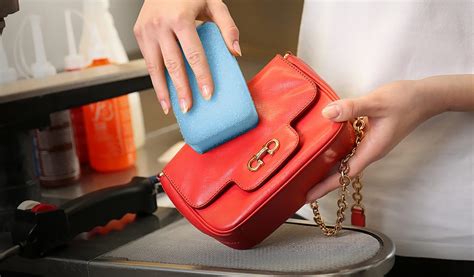Professional Leather Cleaning at Home: Sticky Solution
Leather goods, from luxurious handbags to classic jackets, represent timeless style and enduring quality. However, their delicate nature requires careful maintenance to preserve their beauty and longevity. Accidents happen, and sticky substances—be it spilled soda, tree sap, or even stubborn chewing gum—can quickly mar your prized leather possessions. This comprehensive guide provides a step-by-step approach to professional-level leather cleaning at home, specifically targeting those pesky sticky situations.
What Makes Leather Cleaning So Tricky?
Before diving into solutions, it's crucial to understand the challenges. Leather is a natural material, and its porous nature means spills can penetrate deep, potentially causing staining and damage if not addressed properly. Using harsh chemicals or abrasive cleaning methods can strip the leather of its natural oils, leading to dryness, cracking, and irreversible damage. This is why a gentle, methodical approach is essential.
Identifying the Sticky Culprit: Different Solutions for Different Problems
The cleaning method you choose will depend heavily on the type of sticky substance involved. Here's a breakdown:
H2: How to Clean Sticky Tree Sap from Leather?
Tree sap is notoriously difficult to remove. Never use hot water! Heat can set the sap, making it even harder to remove. Instead:
- Freeze it: Place an ice cube wrapped in a plastic bag on the sap to harden it. This makes it easier to chip away.
- Gentle Scrape: Once frozen, gently scrape away as much sap as possible using a dull knife or plastic scraper. Avoid scratching the leather's surface.
- Isopropyl Alcohol (70%): Dab a small amount of isopropyl alcohol onto a clean, soft cloth. Gently blot (don't rub!) the affected area. Repeat as needed, ensuring the leather doesn't become overly wet.
- Condition: After cleaning, apply a high-quality leather conditioner to replenish lost moisture.
H2: How to Remove Chewing Gum from Leather?
Chewing gum is another sticky nightmare. Similar to tree sap, freezing is your best friend:
- Freeze it: Freeze the gum using an ice cube as described above.
- Careful Removal: Once hardened, gently chip away at the gum using a blunt object. Work slowly and patiently to avoid tearing the leather.
- Leather Cleaner: If any residue remains, use a specialized leather cleaner according to the manufacturer's instructions. Again, blot, don't rub.
- Condition: Condition the leather after cleaning.
H2: How to Clean Spilled Drinks (Soda, Juice, etc.) from Leather?
Spilled drinks require immediate action. The longer the spill sits, the greater the chance of staining.
- Blot Immediately: Use a clean, absorbent cloth to blot up as much of the spill as possible. Avoid rubbing, which can spread the stain.
- Mild Soap Solution: Mix a small amount of mild soap (like baby shampoo) with lukewarm water. Gently blot the affected area with a clean cloth dipped in the solution. Rinse with a damp cloth and blot dry.
- Leather Cleaner (If Necessary): For persistent stains, use a specialized leather cleaner.
- Condition: Always condition your leather after cleaning.
H2: What is the best way to clean sticky residue from leather?
The "best" way depends entirely on the residue's nature. For unknown sticky substances, start with a gentle approach:
- Assess the Situation: Carefully examine the residue. Is it oily, greasy, or water-based?
- Mild Cleaning: Try a mixture of mild soap and water first. Blot gently.
- Isopropyl Alcohol (Caution!): Use isopropyl alcohol only if the above doesn't work and only as a last resort. Test it on an inconspicuous area first to ensure it doesn't damage the leather.
- Professional Help: For stubborn, unidentified residues, consider seeking professional leather cleaning services.
Essential Tools for Professional Leather Cleaning at Home
- Soft cloths: Microfiber cloths are ideal.
- Mild soap (baby shampoo): Avoid harsh detergents.
- Lukewarm water: Never use hot water.
- Isopropyl alcohol (70%): Use sparingly and cautiously.
- Plastic scraper or dull knife: For removing hardened substances.
- Ice cubes: For freezing sticky materials.
- Leather conditioner: Essential for maintaining leather's suppleness.
Maintaining Your Leather Goods
Regular cleaning and conditioning are crucial for preventing sticky substances from causing lasting damage. Always follow the manufacturer's care instructions and avoid exposing your leather goods to excessive heat, moisture, or direct sunlight.
By following these professional tips and techniques, you can effectively address sticky situations and keep your leather goods looking their best for years to come. Remember, patience and a gentle approach are key to successful leather cleaning.

